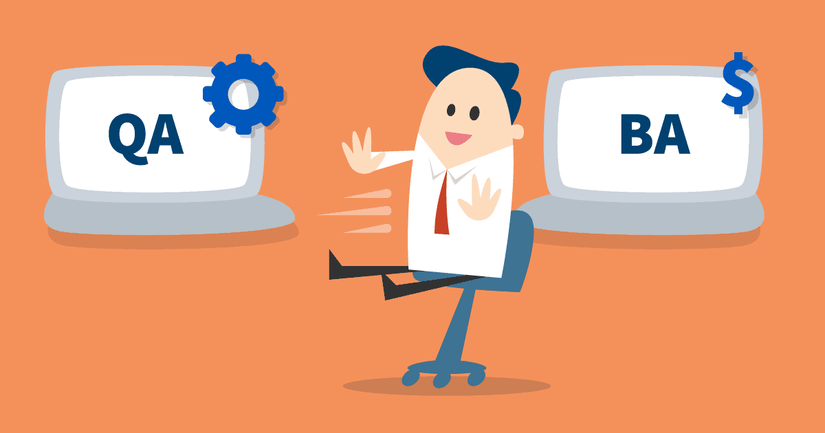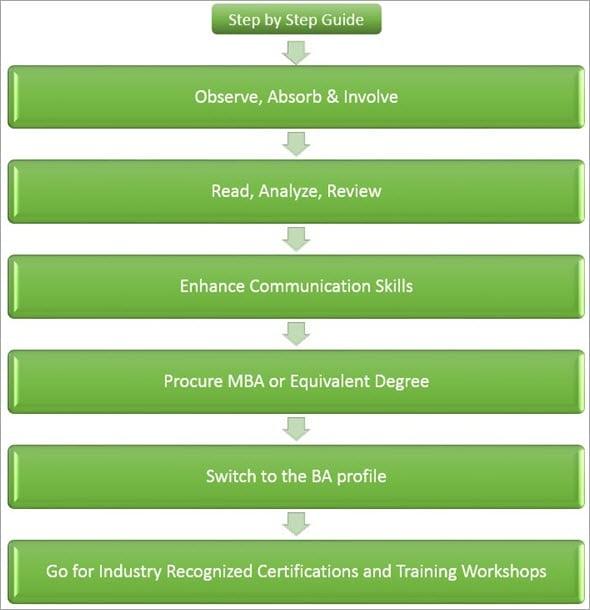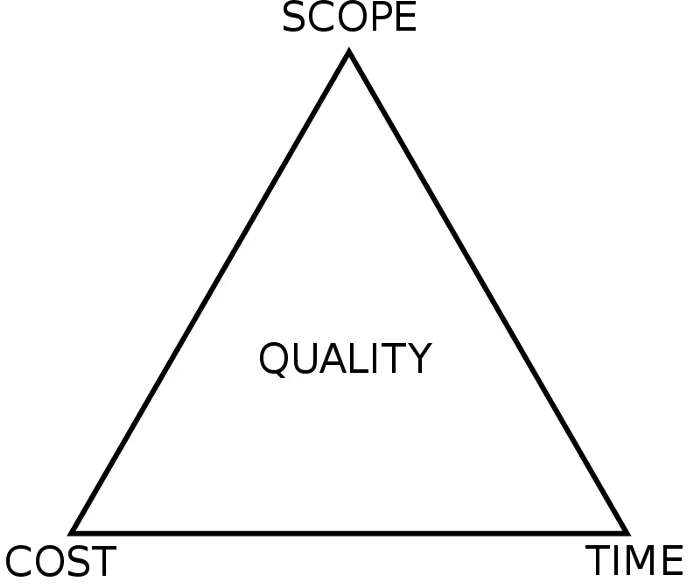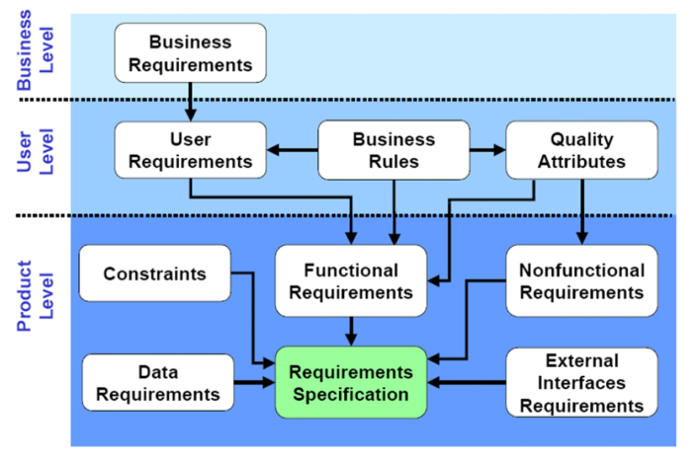QA (Tester) is a software tester developed to ensure the software meets the final requirements of the customer. The BA is also responsible for verifying the software built and delivered to meet the final requirements of the customer.
If the BA and the tester change their roles, then each of them can unleash their skill set which can benefit the project itself. When it comes to software system testing, both the tester and BA work as two sides of the same coin.
1. Why Business Analyst (BA)?

Professional testers have comprehensive software knowledge and understanding. This skill opens the door for Testers to participate in many roles in the IT industry and by understanding the development cycle and development process, Tester can choose to become a release manager, automation engineer. .
It can be said that career change in business analysis is one of Tester’s prospects. Business analysis is a much bigger role when compared to testing or any of the other roles mentioned above.
A tester has the following opportunities to become a BA:
A tester has many reasons to consider switching career to BA for several reasons:
- The tester pays attention to every little detail and has an extremely deep understanding of the software system under construction
- It is natural that a good tester always puts the interests of the customer first.
- A tester is asked to read, analyze and review the required specification documents, which gives them the added advantage in pursuing a BA role.
- The verifier’s analytical skills help the business analyst point out ambiguity in the required specifications, if any.
- It is natural for tester to become a critic in testing software’s visual requirements. This tends to help the tester while collating requests from the customer. The tester must visualize the system to work during the required excitation phase. Many unreasonable and unreasonable requests are eliminated at an early stage.
- Since testers always think critically, they must come up with a complete picture of the system. This is the greatest virtue that can help in business analysis, especially during request stimulation.
- Testers participate in projects and record error reports. This helps testers improve documentary skills that are essential in business analysis.
- If the tester is working in Agile Framework, then the transition to business analysis will be easier. This has been explained in detail in the next section.

Agile is in the ‘Iterative & Incremental’ category . The approach differs from Waterfall in that the final product is released and is only available for final testing. In Agile, the entire requirement was broken down into groups of requirements, and instead of developing the entire system at once, each requirement group was developed, tested, and released to the customer. The software released is capable of delivering to the customer.
An Agile Team is “Self Organized” with Product Owner (BA that defines and manages requirements), Master (Team Manager and Controller) & Team Member (typically 5 to 9 multi-functional team members including including Dev Team and Tester team). So it’s all about team dynamics and high discipline.
As shown in the picture above, the BA participates in the early stages of the process right from the release of the product backlog (requirements), sprint planning, assisting the Dev team with the requirements in the software development and also check out the high-level requests after testing is complete.
Many BA usually only check building software throughout the cycle.
Testers also often participate right from the sprint planning, review meeting, close interaction with Dev team and thorough testing.
There is an overlap of the responsibilities of BA and Tester here. When tester becomes business analyst i.e. Tester BA, his participation in the whole process from start to finish and therefore, tester will easily transition to BA profile in Agile Framework.
2. Steps for the tester to become BA

Step 1:
It’s a positive move and preparation must start while you’re still a tester
Observe and absorb the responsibility of a BA. This becomes easy when you are part of the Agile process. If not agile, make extra effort to work closely with BA.
Share his / her workload. You can take on small tasks while managing your own activities. Observe BA during interactions with customers abroad or when the customer calls for the request interpretation process.
Step 2:
Read, analyze and review required specification documents provided by BA but with a different angle than that of Tester. Read requests from a provocative perspective. Think of asking questions about requirements like in “Why ask like that?”.
Understand business processes and think about them from start to finish. Try to map requirements and processes with existing software, if available, to find required gaps. If it’s 100% customizable, then think about the solution. The solution provided by you and the solution provided by a given BA is different. Your solution could be better.
Step 3:
If you are enjoying the activities listed above then you may seriously consider continuing with specific plans to become a BA.
The first and foremost field to work in is “Communication Skills”. If you think you are not good enough, then quickly start doing the same. Excellent oral and written communication skills are required. It is extremely important to master English.
A BA is required to communicate with customers and various stakeholders within the business to make requests. A BA is also required to impart requirements to a development team. The BA needs to convert requirements into specifications that can be easily understood by developers. Poor communication skills can lead to errors in collecting and subsequently passing requests from the customer to the development team, which in turn leads to incorrectly built software systems.
Improving your writing and speaking skills in English at all is not a quick process. It can be achieved slowly and steadily by supporting BA in writing exercises, and sincere & continuous effort to communicate in English with team members. English speaking courses can sometimes be helpful.
The best way is to communicate in English both in personal and professional settings with colleagues. Get feedback and correct in the right spirit and continue to improve steadily.
Step 4:
The next step is to purchase an MBA or equivalent degree. Now it is REQUIRED.
Success in a career of a BA without a management degree is incomplete. Although there are some bachelors in some disciplines that do not have a management degree, any good and reputable IT institution should always consider a bachelor with a management degree. This will continue to act as an obstacle in a career path, be it for growth or for a lucrative salary package.
And there is a reason for the same. The MBA makes the difference – 108%. The MBA brings out the best in you. It helps improve communication skills, problem solving skills, personality development, leadership skills, decision-making skills, management skills, negotiation skills, persuasion and last but not least. The important part is that it will help you earn a high salary.
Examiners can pursue a full-time MBA course, which is more beneficial because of the course design that best suits you.
However, one may also choose a part-time MBA course. Whether part-time or full-time, you are required to obtain a degree from a well-established and reputable management organization. A degree without personality development will be less helpful in the long run.
In many leading IT institutions, an MBA or equivalent qualification is required for the role of Business Analyst. The salary bracket is also different for MBA and non-MBA candidates applying for BA position. So, in addition to personality development and communication skills enhancement, the MBA promises growth in both grades and scores.
Step 5:
In order to pursue a full-time MBA, a person will obviously have to quit his or her job. But it was completely worth it. You will get more benefits from continuing to work after completing your management course.
The examiner may not have to resign if he decides to pursue a part-time MBA course. But there are times when studying and working at the same time will put more pressure on yourself. But again, the efforts and efforts paid off.
Complete your management course with sincerity and patience. The duration of most management courses is one or two years.
3. So what a tester needs to do: Clear a part of the mindset

Start with “WHY?” instead of “WHAT?”
With the Tester mindset, when receiving any software request, the Tester will often ask questions such as: What is this feature? How to test this feature? * What is the permission of this feature? * Who is authorized to use this feature?
Instead, we should start with ** “WHY?” **
- Why do we have to do this feature?
- What is its purpose?
- What is the user’s current process to determine why we must enhance this place?
- Is this feature CUSTOMER WANTS or CUSTOMER NEEDS? In this position, what you are receiving is no longer the software requirement for testing but the request, the customer’s desire so your question mindset should change.

Don’t get into details too soon
From the perspective of the tester, there will be a lot of focus on the unhappy case when any feature is introduced. However, during a client new feature meeting, the client just wants you to propose solutions to their problem. There is not only one solution to the problem, but analyzing the pros and cons of each would be better than sticking to unhappy cases. I say that does not mean that this exception flow analysis is not necessary but is still necessary but not at this stage.
Software quality matters, but not the most
Testers often have a mindset that requires everything to be perfect until release:
- 100% test case coverage
- 0 bugs including minor bugs
However, for BA, you should accept the imperfections when releasing the feature to production, the minor or unlikely cases can ignore the following fix for the purpose of meeting customer requirements at that time. like running campain marketing on holiday, competing with competitors …

Refer: https://www.softwaretestinghelp.com/career-shift-from-tester-to-ba/

